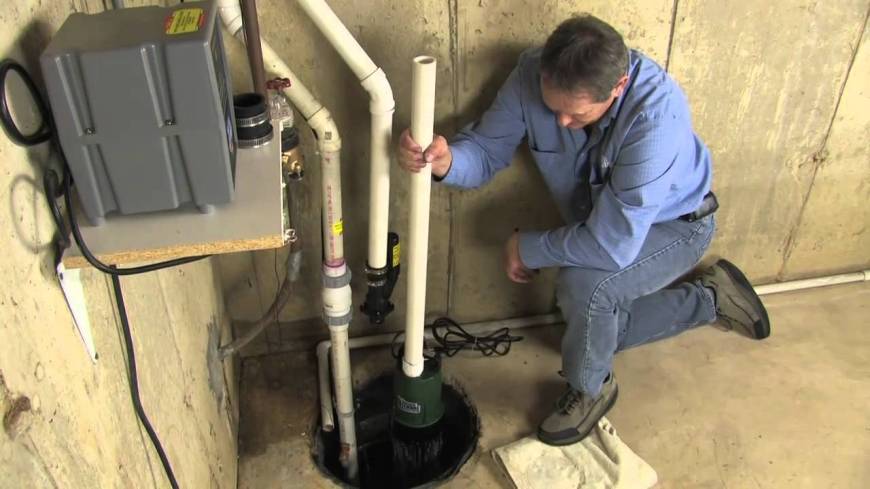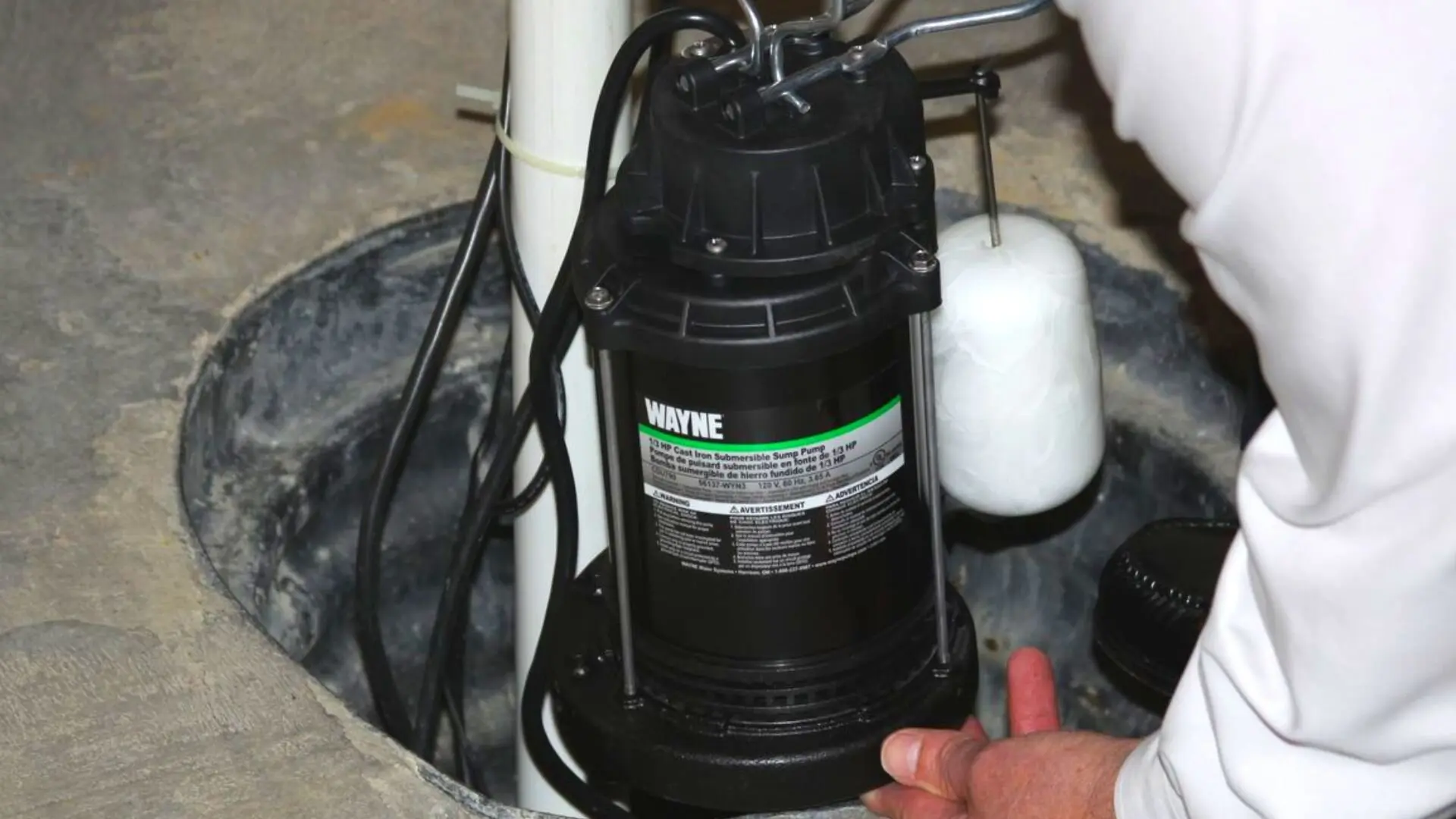An Guide to Correctly Maintaining a Sump Pump
An Guide to Correctly Maintaining a Sump Pump
Blog Article
Are you in search of details involving Keep Your Sump Pump Clean, It'll Keep You Dry?

Sump pumps are critical elements in many homes, specifically in areas susceptible to flooding or excessive wetness. They aid stop water damages by efficiently eliminating excess water from basements or crawl spaces. Nevertheless, like any other appliance, sump pumps require regular upkeep to ensure they work effectively when required the most. Cleansing your sump pump is an essential part of its maintenance, and understanding exactly how to do it effectively can save you from costly fixings and potential disasters.
Introduction
Preserving a tidy sump pump is important for its appropriate functioning and longevity. Overlooking this necessary job can lead to clogs, breakdowns, and inevitably, water damage to your home. Consequently, learning just how to clean up a sump pump is crucial for home owners who rely on these devices to maintain their cellars dry and safeguarded.
Indicators of a Dirty Sump Pump
Understanding when your sump pump requires cleaning is vital for avoiding possible breakdowns. Some common signs that suggest a filthy sump pump include unusual sounds throughout operation, decreased water flow, and noticeable debris in the pit. If you discover any one of these signs and symptoms, it's essential to clean your sump pump promptly to stay clear of any type of further issues.
Getting ready for Cleansing
Before you begin cleaning your sump pump, it's essential to take some safety precautions. Begin by turning off the power to the pump to avoid any kind of electrical mishaps. Furthermore, put on ideal protective gear, such as handwear covers and goggles, to secure yourself from dust, debris, and prospective microorganisms.
Understanding the Sump Pump
Prior to diving into the cleansing procedure, it's important to have a fundamental understanding of exactly how a sump pump functions. Commonly mounted in a pit or container below the cellar floor, a sump pump consists of a number of essential components, including a pump, a float switch, and a discharge pipe. When water accumulates in the pit, the float switch triggers the pump, which after that pumps the water out with the discharge pipeline, far from the structure's structure.
Step-by-step Guide to Cleaning a Sump Pump
Shutting Off the Power
Begin by disconnecting the power supply to the sump pump to stop any accidents while cleansing.
Checking for Correct Performance
Before re-installing the pump, execute a fast test to make certain that the float button turns on the pump properly. Put some water into the sump pit and observe the pump's operation. If everything is functioning correctly, you can reconstruct the pump and reconnect the power supply.
Removing Debris and Dust
Use a pail or an inside story to remove any type of visible particles, dust, or debris from the sump pit. Dispose of the debris effectively to prevent it from obstructing the pump or the discharge pipe.
Cleansing the Pump and Float Switch Over
Once the pit is clear of debris, very carefully eliminate the pump from the pit. Inspect the pump and the float switch for any type of signs of damage or wear. Make use of a soft brush or towel to clean up the surfaces and remove any type of built up grime.
Purging the System
After cleaning up the pump and float switch, flush the sump pit with tidy water to get rid of any type of staying dirt or debris. This will certainly assist ensure that the pump runs efficiently and successfully.
Upkeep Tips to Maintain Your Sump Pump Clean
In addition to regular cleaning, there are numerous maintenance tips you can comply with to maintain your sump pump in ideal condition:
Verdict
Cleansing your sump pump is a vital aspect of its upkeep and ensures that it operates effectively when you require it one of the most. By following the actions detailed in this guide and including regular upkeep into your regimen, you can extend the life-span of your sump pump and shield your home from water damage.
6 STEPS ON HOW TO CLEAN A SUMP PUMP PROPERLY
UNDERSTANDING SUMP PUMPS
Your sump pump plays a crucial role in protecting your home by managing and removing excess water. It primarily functions as a “shield”, guarding your basement against the damaging effects of water accumulation. The pump is housed in a sump pit in the lowest part of your basement, and its job is to pump out any water that collects there.
During heavy rainfalls or when snow melts rapidly, water can infiltrate your basement, posing potential risks like flooding, structural damage, and harmful mold growth. Here, the sump pump springs into action, pumping out the intruding water and directing it away from your home.
SAFETY FIRST
Before cleaning, remember to prioritize safety. Disconnect the sump pump from the power source to prevent any accidental electric shocks. Also, wear sturdy gloves to protect your hands from any sharp or dirty components within the pump.
REMOVE THE SUMP PUMP
After ensuring your safety, the next step is to remove the sump pump from its pit. Doing this might require careful maneuvering as you don’t want to damage any pump components. Once removed, clean the sump pit to remove any accumulated debris or sludge.
INSPECT THE PUMP
Inspect the pump for any visible signs of wear or damage. Check the power cord, float switch, and impeller housing. If any components look worn out or damaged, consider replacing them to ensure optimal performance.
CLEAN THE PUMP
Thoroughly clean the pump with warm, soapy water. Make sure to rid it of any dirt, gravel, or other debris that might impede its performance. You can use a toothbrush to clean the small, hard-to-reach parts of the pump.
REINSTALL THE SUMP PUMP
Reinstall the pump into the sump pit Make sure it’s positioned correctly to remove the water effectively Once it’s back in place, reconnect it to the power source TEST THE PUMP
Finally, pour some water into the pit to ensure the pump works correctly. It should start automatically and begin pumping out the water; if it doesn’t, check the power source and the positioning of the pump.
Remember, while cleaning your sump pump is an essential part of home maintenance, hiring a professional plumber for a thorough inspection and cleaning at least once a year is also important. This will ensure that your pump is in optimal condition, ready to protect your home from potential water damage.
BEST PRACTICES FOR CLEANING SUMP PUMP DISCHARGE PIPES
Regular Inspection: Regularly inspect your discharge pipes, especially during heavy rainfall or snowmelt periods. Look for any signs of blockage or damage. Early detection of problems can prevent serious issues down the line. Periodic Cleaning: Over time, sediment and debris can accumulate in the discharge pipes, impeding the flow of water. Regular cleaning helps keep the pipes clear and functioning efficiently. You can use a high-pressure water jet to effectively clean the pipes. Insulation During Winter: In colder climates, discharge pipes can freeze, blocking the outflow of water. Protect your discharge pipes from freezing temperatures by insulating them with foam pipe insulation. This will ensure the sump pump can continue to discharge water even in freezing conditions. Proper Positioning: The discharge pipe should be positioned to direct water away from your home’s foundation. Improper positioning can lead to water seeping back into the basement. Ensure the pipe is long enough and angled correctly. Installation of a Check Valve: A check valve prevents water from flowing back into your sump pit after the pump has pushed it out. Installing a check valve helps maintain the efficiency of your sump pump and reduces the risk of flooding. Minimize Pipe Turns: Every curve or turn in the discharge pipe can decrease the efficiency of water flow. By minimizing turns and bends in your discharge pipe, you can increase the efficiency of your sump pump. https://www.fullspeedplumbing.com/how-to-clean-a-sump-pump-properly9999/

Do you appreciate reading about Cleaning & Maintenance Tips for Your Home's Sump Pump? Try leaving a remark directly below. We'd be delighted to find out your feelings about this piece. We are looking forward that you visit us again in the near future. Sharing is nice. Helping others is fun. I am grateful for being here. Please check up our website back soon.
Schedule Now! Report this page